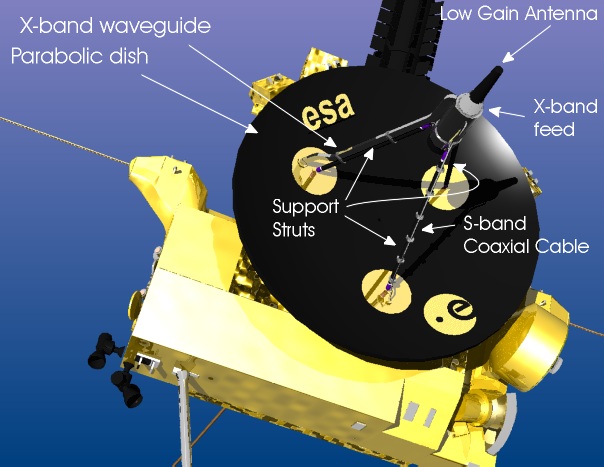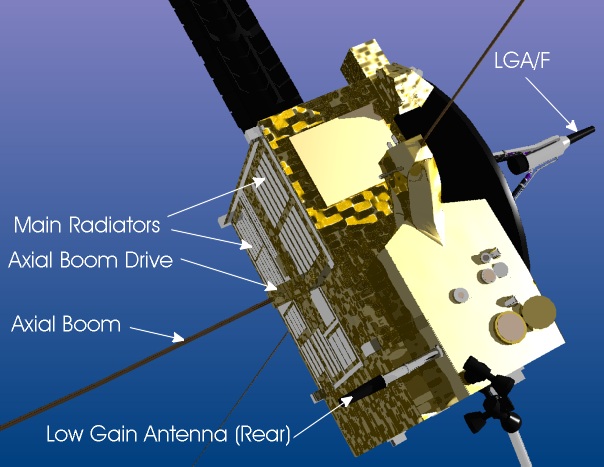HGA - Ulysses
Telemetry, Tracking & Command Subsystem
High Gain Antenna
Ulysses HGA is a 1.65m parabolic dish, made of honeycomb-reinforced carbon fiber. Three struts support the X-band feed, and the associated X-band waveguide running from the feed to the TTC subsystem is attached to one strut. Another strut supports the S-band coaxial cable running from the TTC subsystem. For an explanation of TTC subsystem connectivity, see the TTC Subsystem diagrams.
Transmit Gain (S-band): 25.8 (+1 to 0.5) dB
Transmit Gain (X-band): 40.2 (+1 to 0.4) dB
Polarization: Right Hand Circular
Receive Gain (S-band): 26.4 (+1 to 0.45) dB
Low Gain Antenna (Forward)
The LGA/F can be seen mounted on the three support struts; it has hemisperical coverage and provided S-band downlink at those times in the early mission when the HGA was not pointed at the Earth. Currently, the LGA/F receives the S-band uplink; see the Radio Frequency Distribution Unit connectivity diagram to see the uplink path.
Transmitting Gain (S-band): -3.4 to 0.5 dB
Polarization: Right Hand Circular
Receive Gain (S-band): -3.4 to -6.1 dB
Low Gain Antenna (Rear)
The LGA/R is similar to the Low Gain Antenna (Forward) but is mounted on the opposite side of the spacecraft protruding from the -X wing. It was used to provide S-band uplink and downlink during phases of the early mission when both the HGA and the LGA/F were pointed away from the Earth, after deployment from the Shuttle and before the initial Earth Acquisition Manoeuvres.
The LGA/R is no longer routinely used; however it could be used as a backup receive antenna in the highly unlikely event that uplink was not possible via HGA or LGA/F. A major depointing at exteme distances, or malfunction of the Radio Frequency Distribution Unit could conceivably cause this.
Transmitting Gain (S-band): -3.4 to 0.5 dB
Polarization: Right Hand Circular
Receive Gain (S-band): -3.4 to -6.1 dB








































 Sign in
Sign in
 Science & Technology
Science & Technology

